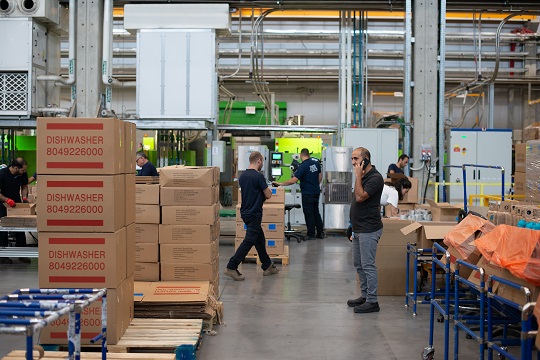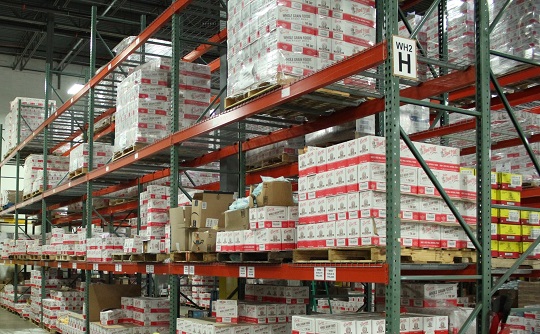In your world of data management and logistics, the First-In-First-Out (FIFO) method plays a crucial role in helping you maintain the order of items and ensure efficiency.
FIFO is a principle that states the first item you enter a queue or inventory will be the first one you remove. This concept is widely used in various industries, such as warehousing, inventory management, and database systems.
In this blog post, we will explore the importance of FIFO, its applications, and the best practices you can follow to maintain FIFO effectively.
But, before we delve deeper into this topic, make sure you have also followed my LinkedIn account to gain more insights on supply chain management.
Table of Contents
Understanding the FIFO Principle
In your context, FIFO is an essential concept used to ensure proper organization and handling of data and items.
The fundamental idea behind FIFO is straightforward for you to grasp: the oldest or earliest item in a queue or inventory should be the first one you process or use.
This method helps you manage inventory effectively, reducing waste, and ensuring fair treatment for items based on their arrival time.
By following FIFO, you can prioritize the usage or processing of older items, which can be particularly important in industries dealing with perishable goods or time-sensitive materials.
This way, you can avoid product spoilage or obsolescence, leading to significant waste reduction and cost savings.
Additionally, FIFO ensures a fair and transparent approach to handling items.
By treating items based on their arrival time, you avoid any bias or preference towards specific items.

This approach is especially crucial in maintaining integrity in your inventory management processes.
Overall, understanding the FIFO principle empowers you to streamline your operations, make efficient use of resources, and maintain an organized flow of data and items throughout your business processes.
Applications of FIFO
In your various industries and processes, FIFO finds applications that bring significant benefits and efficiencies.
Inventory Management
In your industry, dealing with perishable goods such as food and pharmaceuticals, FIFO is crucial to prevent spoilage and waste.
By following FIFO, you can ensure that you use or sell older stock first, reducing the risk of expired products and inventory write-offs.
This practice not only saves costs but also helps maintain the quality and freshness of your products, which is essential for customer satisfaction and brand reputation.
Warehouse Management
As you handle large quantities of products and materials in your warehouses, FIFO becomes vital in organizing storage and retrieval processes.
By adhering to FIFO principles, you can efficiently rotate stock, ensuring that older items are used or shipped out first.
This minimizes the handling of older items, reduces the risk of stock obsolescence, and optimizes space utilization, making your warehouse operations more streamlined and cost-effective.
Data Structures and Queues
In computer science, you implement FIFO using data structures like arrays or linked lists, creating queues that follow the FIFO principle.
These data structures are ideal for various applications in your technology-driven world, such as task scheduling and print spooling.
By using FIFO in your data structures, you ensure that tasks or print jobs are processed in the order they were received, maintaining fairness and efficiency in your computational processes.
Financial Accounting
In your financial accounting practices, FIFO is employed to determine the cost of goods sold (COGS) and the value of ending inventory.
By assuming that the first items purchased are the first ones sold, you achieve a more accurate representation of costs and revenues.

This enhances the reliability of your financial statements, which is essential for making informed business decisions and maintaining transparency with stakeholders.
By incorporating FIFO in these various applications, you can enhance your business processes, reduce waste, optimize resource utilization, and improve overall efficiency.
Embracing FIFO principles aligns with your goal of maximizing productivity and ensuring the best possible outcomes for your customers and stakeholders.
You might also like:
- Optimize Your Order Picking: Which Method Works Best for You – Pick to Light or Voice Picking?
- Develop Your Leadership: Unleash the Benefits of Delegation in Your Supply Chain Management
Advantages of FIFO
Embracing the First-In-First-Out (FIFO) method in your business processes offers several significant advantages.
Reduced Waste
By consuming or selling older items first, you can effectively reduce the likelihood of product obsolescence and spoilage in your industry.
This proactive approach to inventory management leads to significant waste reduction and cost savings, particularly in industries dealing with perishable goods.
Minimizing waste not only positively impacts your bottom line but also aligns with your commitment to sustainability and responsible business practices.
Accurate Inventory Valuation
FIFO ensures that the cost of goods sold (COGS) and the value of ending inventory are calculated based on the most recent purchase prices.
This results in a more accurate representation of your business’s financial health.
The up-to-date valuation of inventory helps you make informed decisions about pricing, procurement, and overall financial planning, ensuring your business operates efficiently and competitively.
Fair Treatment of Items
In your inventory management practices, FIFO ensures that items are used or sold in the order they arrive, leaving no room for bias or preference towards specific items.

This approach promotes fairness and transparency in your inventory management processes.
Customers and stakeholders can trust that you handle items equitably, enhancing their satisfaction and confidence in your business.
Efficient Resource Utilization
By implementing FIFO, you optimize the utilization of your resources.
Older items are used or processed before newer ones, ensuring that materials and products flow smoothly through your operations.
This not only reduces waste but also enhances overall operational efficiency. You can meet customer demands effectively, improve lead times, and maintain a well-organized inventory system.
Incorporating FIFO in your business practices empowers you to minimize waste, improve financial accuracy, foster fair treatment of items, and optimize resource utilization.
By embracing these advantages, you set your business on a path of sustainable growth and operational excellence, ultimately leading to increased customer satisfaction and stronger competitiveness in your industry.
You might also like:
- The Dilemma of Using Plastic Wrap for Temporary Storage: Cost vs. Sustainability
- Is It Time to Upgrade? Assessing the Benefits of Replacing an Aging Forklift
Best Practices to Maintain FIFO
To ensure the successful implementation of the First-In-First-Out (FIFO) method in your operations, consider adopting the following best practices:
Proper Labeling and Date Tracking
In your industry, dealing with perishable goods or time-sensitive materials, it is crucial to label items with their production or expiration dates.
By doing so, you can easily identify older items and ensure they are used or sold first. Regularly monitor and update your inventory based on these dates to ensure compliance with FIFO principles.
This practice not only prevents waste and spoilage but also helps you maintain the highest product quality and safety standards.
Regular Stock Rotation
Implement a routine stock rotation process in your inventory management. Move older items to the front and newer items to the back of your shelves or storage areas.

By prioritizing the usage of older inventory, you can guarantee that these items are consumed or sold before newer batches.
This practice ensures the continuous flow of products and materials, reduces the risk of inventory obsolescence, and optimizes your storage space.
Software and Automation
Leverage inventory management software and automation tools to enhance your FIFO compliance.
These advanced systems can track stock levels, monitor expiration dates, and maintain FIFO in real-time.
By using such technology, you can improve the accuracy and efficiency of your inventory management processes.
Automation reduces the likelihood of human errors and streamlines your operations, leading to cost savings and improved overall productivity.
Employee Training and Awareness
Educate your warehouse staff and employees about the importance of FIFO and how to maintain it effectively.
Conduct regular training sessions and awareness programs to ensure that everyone in your organization understands the significance of adhering to FIFO principles.
By fostering a culture of FIFO compliance, you promote accountability and ensure consistent implementation throughout your operations.
By incorporating these best practices, you create a robust framework for maintaining FIFO in your business processes.
Proper labeling, regular stock rotation, software integration, and employee education collectively contribute to minimizing waste, improving inventory accuracy, and maximizing resource utilization.
Implementing these practices will empower you to achieve operational excellence and uphold the highest standards of efficiency and customer satisfaction in your industry.
Conclusion
In conclusion, the First-In-First-Out (FIFO) method is a fundamental principle that plays a crucial role in helping you maintain the order of items and improving efficiency in your various industries.
By following FIFO, you can actively reduce waste, ensure accurate inventory valuation, and promote fair treatment of items based on their arrival time.
To maintain FIFO effectively, it is essential for you to implement best practices such as proper labeling, regular stock rotation, and utilizing inventory management software.
By embracing FIFO principles, you can streamline your operations, optimize resource utilization, and minimize the risk of product obsolescence or spoilage.
This not only enhances your business’s overall productivity but also aligns with your commitment to sustainable business practices in an ever-changing world.
Incorporating FIFO into your workflows empowers you to make well-informed decisions, optimize inventory levels, and maintain transparency with stakeholders.
By adopting these principles and best practices, you position your business for long-term success and growth, while also contributing to a more sustainable and efficient business landscape.
Hope it is useful!
Please share this article with your colleagues as well, so that they can also benefit from it. Follow my LinkedIn account for more insights on supply chain management. All articles on this blog are free for you to use for any purpose, including commercial use, without the need for attribution.
 by
by 
